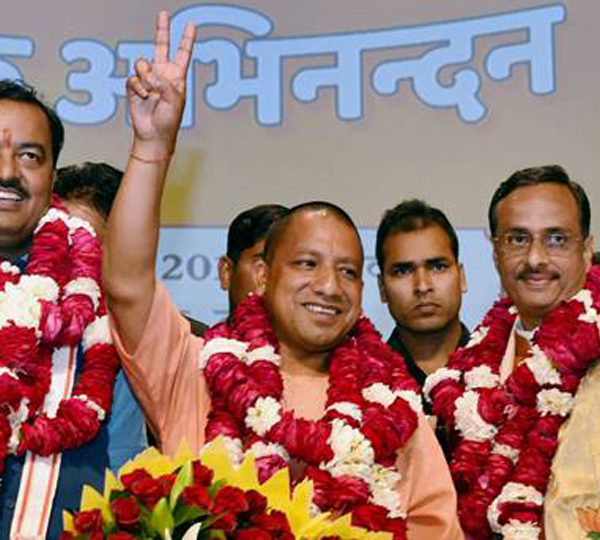The Luangwa Game Park in Africa had the biggest concentration of 60,000 wild elephants, now reduced to a few thousands due to poaching.

In the early ’70s, when I first visited Luangwa Game Park, considered by many to be the greatest Game Park in the world, it had the biggest concentration of wildlife on the planet (a population of 60,000 elephants) – alas! poaching for ivory has reduced the number of elephants to just a few thousands now. Here it may be mentioned that unlike Indian elephants, which are by nature docile and can be trained, African elephants, which are one- and-a-half times the size of Indian elephants, are wild and cannot be trained, though there is an account of Hannibal crossing the Alps on an African elephant. African elephants can grow to such an enormous size that they find their own tusks too heavy to carry!
When I lived in Kenya, the biggest elephant, with the heaviest tusks, was “Ahmed”, who was declared a “National Treasure” by the President, the late Jomo Kenyatta, and was given special protection. After Ahmed died, Abdul was declared a “National Treasure”.

Rhinos, once the pride of Luangwa along with its elephants, were wiped out by 1986, thanks to the demand for rhino horn as an aphrodisiac – a baseless belief of lecherous Chinese millionaires, who are willing to pay any price to get hold of just one horn, which is really matted hair – a psychological equivalent to “Spirit”, which, as Shakespeare rightly observed, “provokes the desire, but takes away the performance”.
Unscrupulous and affluent White settlers in Nairobi, Kenya would show off their ivory tusks, hanging from the chandeliers or nailed to the walls in their marble mansions, keep elephant legs as stools in their offices and spread out Zebra skin as carpets, in their living rooms.

In African Game Parks the vegetation is “savannah” – vast plains of green grass spread out to hundreds of miles, swaying in the breeze, while getting bathed in the harsh heat of the African sun. Africa is a land not fully explored. It provides shelter to tribes like the Maasai, whose people grow enormously tall, and can throw a spear to a distance of hundreds of yards, beating every record in the Olympics, a land teeming with wildlife like the “Big Five” as they refer to the lion, the elephant, the rhino, the leopard and the wild buffalo. Is it any wonder that some of the world’s fastest runners hail from that continent, where they are either chasing lions or running away from them, as Abebe Bikila, the first man in history to have become the Olympic Marathon Champion running barefoot explained in 1960, when asked how he was able to run such long distances effortlessly without getting tired?
Also Read : African Safari – An Exciting Holiday Among Animals and Wilderness
To hear a first-hand account of the life and work Peter Matthiessen, one of the greatest naturalists of all time; to learn about the research of Richard Leakey the eminent anthropologist, pleontologist, and conservationist; to hear with rapture about the life and adventures of Dian Fossey, who studied mountain gorillas upon “the misty mountain tops” of Rwanda, and who helped to dispel the erroneous and misleading image of the gorilla as a savage killer, mainly created by the wild and fantastic imagination of movie moghuls of Hollywood in sensational films like ‘King Kong’! (Fossey, who established an emotional bond with the great apes, revealed to the world that the fierce-looking apes were, in reality, docile and, affectionate and lived in family groups. Fossey did her best to fight poachers, while living the life of a recluse with the gorillas, and met with a strange and violent death, most probably at the hands of Poachers); to have a glimpse of the splendours of the greatest wildlife spectacle on earth; to watch vast herds of wildebeests migrate across the Serengeti Plains at dawn; to witness the pink flamingoes soar upwards towards the clouds, adding a hue to the crimson skies above Lake Naivasha; to watch the bizarre spectacle of a hungry and angry, fully grown lion pounce upon a cantering zebra as it runs for dear life; to gaze with rapture upon the great elephants and bright coloured butterflies from a mountain top; to look through the window of your aircraft at the snowy top of Mount Kilimanjaro, fabled in Hemingway’s fiction; to hear the mating calls of wild hippopotamuses, in the vast, wide, and restless Zambezi; to listen to the low grunts of ferocious and hungry lions, which raise their heads out of the grass to sniff the wind in order to catch the scent of potentially edible wildebeests and zebra; to stay in a lodge in the heart of Luangwa Game Park and watch a ruthless and wily crocodile glide stealthily from the banks of the Luangwa river, to catch its unsuspecting prey; to observe a herd of elephants come every evening without fail at the same time, to the main Lounge of Ngorongoro Hotel, situated on the rim of the Crater, and rip apart all the pipes, despite their having been repaired only the previous day; to look down from the Outer Rim of the Ngorongoro, into the bottom of the extinct volcano and have a glimpse of some of the world’s oldest, trees, rocks, lakes and volcanic ash; to take a sip of water from a placid pond near “The Tree where Man was Born” in the bottom of Ngorongoro Crater, cut off from evolution and the march of time — this is the very stuff of adventure, found nowhere else on this planet.

To conclude our cerebral safari, if I were asked to choose a place for an exciting holiday from a very big list of adventurous spots on earth, with glossy pictures and catchy slogans in colorful travel brochures, I would unhesitatingly choose the turbulent waves of the wild Zambezi rather than the quietly flowing waters of the Fountain of Trevi in Rome, in which if you throw a coin, you get to visit Rome again, according to legend, and which also lures starry-eyed young boys and girls, to visit the fountain to find true love; I would rather choose to watch the crimson sunsets in the skies over Amboseli, rather than the glare of neon lamps in Las Vegas which turn night into day; I would rather choose to listen to the “murmurous haunt of flies on summer eves” in the eerie silence of wild Kafue, rather than to the the cacophony of the “squeaky horns” of the “taxi cabs” of Paris that Dean Martin sang about; I would rather choose the “verdurous glooms and winding mossy ways” of exotic Luangwa, rather than the giddy freeways of Los Angeles.
If I were asked to choose between the uncharted and unexplored interiors of untamed Africa and the wonders of modern day neon–lit, concrete jungles of “rock-built” cities, I would, any day, unhesitatingly choose primeval Africa.













































